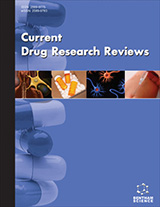
Abstract
Diabetes Mellitus (DM) is one of the highest contributors to global mortality, exceeding numbers of even the three major infectious diseases in the world, namely Tuberculosis, HIV AIDS, and Malaria. DM is characterised by increased serum levels of glucose caused by a loss of beta cells of the pancreatic islets, responsible for the secretion of insulin. Upon accumulation of data via a wide array of literature surveys, it has been found that Thioredoxin Interacting Protein (TXNIP) presents itself as a vital factor in controlling the production and loss of beta islet cells. TXNIP inhibits the action of the Thioredoxin (TRX) protein found in the beta cells thereby rendering it ineffective in maintaining the cellular redox balance causing oxidative stress and subsequent consequences ultimately leading to aggravation of the disease. TRX exists in the form of two isoforms - TRX1, which is located in the cytosol and at times translocates to the nucleus, and TRX2, which is located in the nucleus. TRX is responsible for the maintenance of the normal cellular redox balance by reducing the oxidised proteins formed by the Reactive Oxygen Species (ROS) with the help of NADPH dependent TRX Reductase enzyme. This proves to be essential in the pathogenesis of Diabetes Mellitus as the beta cells of the pancreatic islets lack a sufficient amount of antioxidant systems. Thus, inhibition of TXNIP has become essential in the survival of beta cells, not only enhancing insulin secretion and sensitivity but also alleviating the diseases associated with Diabetes. Hence, TXNIP is discovered to be a unique therapeutic target in the management of DM.
Graphical Abstract
[http://dx.doi.org/10.4066/AMJ.2013.1791] [PMID: 24223071]
[http://dx.doi.org/10.1504/IJCVR.2019.101537]
[http://dx.doi.org/10.4066/AMJ.2014.1979] [PMID: 24567766]
[http://dx.doi.org/10.2337/diacare.27.5.1047] [PMID: 15111519]
[http://dx.doi.org/10.2147/DMSO.S232221] [PMID: 32021350]
[http://dx.doi.org/10.3389/fimmu.2013.00514] [PMID: 24409188]
[http://dx.doi.org/10.1016/j.thromres.2020.05.030] [PMID: 32521334]
[http://dx.doi.org/10.3390/ijms22052754] [PMID: 33803178]
[http://dx.doi.org/10.1016/0167-4781(94)90242-9] [PMID: 8086474]
[http://dx.doi.org/10.1016/j.mito.2012.06.004] [PMID: 22750447]
[PMID: 28137209]
[http://dx.doi.org/10.1210/me.2014-1095] [PMID: 24911120]
[http://dx.doi.org/10.1038/nm.3287] [PMID: 23975026]
[http://dx.doi.org/10.1097/MED.0000000000000391] [PMID: 29356688]
[http://dx.doi.org/10.1111/cbdd.13828] [PMID: 33560565]
[http://dx.doi.org/10.1074/jbc.M113.473082] [PMID: 23803610]
[http://dx.doi.org/10.1016/j.yexcr.2020.112293] [PMID: 32950473]
[http://dx.doi.org/10.1016/j.ejphar.2020.173503] [PMID: 32858047]
[http://dx.doi.org/10.1016/j.phrs.2016.11.004] [PMID: 27826011]
[http://dx.doi.org/10.1046/j.1523-1755.2003.00263.x] [PMID: 14531794]
[http://dx.doi.org/10.1016/j.redox.2018.02.013] [PMID: 29475133]
[http://dx.doi.org/10.1016/j.yexcr.2020.111862] [PMID: 31982382]
[http://dx.doi.org/10.1681/ASN.2014050528] [PMID: 25855771]
[PMID: 24353900] [http://dx.doi.org/10.4172/2155-9570.1000287] [PMID: 24353900]
[http://dx.doi.org/10.1038/cddis.2010.42] [PMID: 21364670]
[http://dx.doi.org/10.1155/2012/438238]
[http://dx.doi.org/10.1186/s12974-020-01901-6] [PMID: 32723328]
[http://dx.doi.org/10.1038/ni.1831] [PMID: 20023662]
[http://dx.doi.org/10.1186/s12974-018-1073-0] [PMID: 29386025]
[http://dx.doi.org/10.1007/s12035-014-8766-x] [PMID: 24939693]
[http://dx.doi.org/10.1177/1074248416675731] [PMID: 27807222]
[http://dx.doi.org/10.2147/NDT.S273421] [PMID: 33262598]
[http://dx.doi.org/10.1097/MPA.0b013e31815929fe] [PMID: 18376310]
[http://dx.doi.org/10.1002/jcp.27767] [PMID: 30565676]
[http://dx.doi.org/10.1186/s12974-017-0878-6] [PMID: 28490373]
[http://dx.doi.org/10.1007/s11010-018-3381-1] [PMID: 29905889]
[http://dx.doi.org/10.1007/s00701-015-2390-z] [PMID: 25782582]
[http://dx.doi.org/10.3233/JAD-180735] [PMID: 30372683]
[http://dx.doi.org/10.3390/ijms21249357] [PMID: 33302545]
[http://dx.doi.org/10.3233/JAD-190223] [PMID: 31561358]
[http://dx.doi.org/10.1016/j.neuint.2020.104685] [PMID: 31931042]
[http://dx.doi.org/10.1016/j.biocel.2011.09.005] [PMID: 21964212]
[http://dx.doi.org/10.1073/pnas.182372299] [PMID: 12189205]
[http://dx.doi.org/10.1182/blood-2010-07-294827] [PMID: 21734239]
[http://dx.doi.org/10.4049/jimmunol.164.12.6287] [PMID: 10843682]
[http://dx.doi.org/10.1038/onc.2011.102] [PMID: 21460850]
[http://dx.doi.org/10.1158/0008-5472.CAN-04-2271] [PMID: 15930262]
[http://dx.doi.org/10.1186/1476-4598-13-62] [PMID: 24645981]
[http://dx.doi.org/10.3390/ijms22041693] [PMID: 33567593]
[http://dx.doi.org/10.1038/jhh.2011.102] [PMID: 22113441]
[http://dx.doi.org/10.1016/j.jdiacomp.2015.11.021] [PMID: 26763822]
[http://dx.doi.org/10.1016/j.diabres.2015.05.028] [PMID: 26026780]
[http://dx.doi.org/10.1007/s10456-019-09704-x] [PMID: 31900750]
[http://dx.doi.org/10.1016/j.cellsig.2012.04.017] [PMID: 22561086]
[http://dx.doi.org/10.1016/S0960-9822(00)00742-9] [PMID: 11069105]
[http://dx.doi.org/10.1074/jbc.M107895200] [PMID: 11724780]
[http://dx.doi.org/10.2353/ajpath.2009.090263] [PMID: 19808645]
[http://dx.doi.org/10.2337/db11-0955] [PMID: 22442301]
[http://dx.doi.org/10.1111/bph.12226] [PMID: 23647015]
[http://dx.doi.org/10.1016/j.phrs.2018.09.021] [PMID: 30248460]
[http://dx.doi.org/10.1016/j.cmet.2017.03.018] [PMID: 28380378]
[http://dx.doi.org/10.1016/j.cmet.2020.07.002] [PMID: 32726606]
[http://dx.doi.org/10.1016/j.ejphar.2014.09.046] [PMID: 25446924]
[http://dx.doi.org/10.3892/ijmm.2018.3585] [PMID: 29568876]
[http://dx.doi.org/10.1016/j.cbi.2017.10.012] [PMID: 29031534]
[http://dx.doi.org/10.1016/j.jss.2010.01.007] [PMID: 20334881]
[http://dx.doi.org/10.1016/j.lfs.2016.06.002] [PMID: 27266851]
[http://dx.doi.org/10.1016/j.phymed.2018.10.013] [PMID: 30385134]
[http://dx.doi.org/10.1016/j.jgr.2015.11.002] [PMID: 27746687]

























